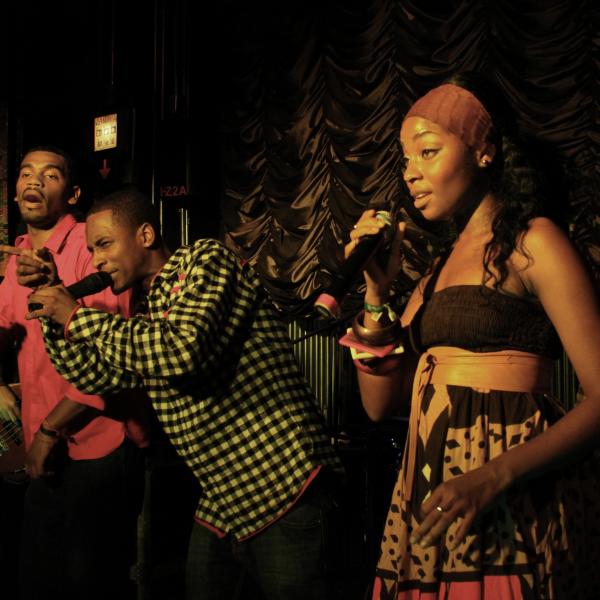Gicela Medina is a second-year student in the Hispanic studies PhD program and co-host of “Street Politics Across the Americas” along with Rodrigo Viqueira, who is a PhD candidate in Hispanic studies and who is also pursuing a Graduate Certificate in Latin American Studies. “Street Politics Across the Americas” was supported by The Divided City Initiative in 2021.

is available at https://anchor.fm/spaapod.
The year 2020, without a doubt, inscribed itself in history and changed many of our lives in what felt like one day to the other. Suddenly, our work spaces, our college campuses, our children’s schools, our favorite bars and restaurants, were all closed down “until further notice.” All at once, we were now avoiding the streets which we had previously occupied everyday, without much thought, as we commuted to work or school or when we walked down to our nearest coffee shop for our daily dose of caffeine. 2020 became a year that changed how we perceive streets and how we relate to each other in public spaces.
When the pandemic started, I, Rodrigo, was juggling between Zoom classes and the remains of my social life in St. Louis, but with most of my mental energies absorbed by the tracking of the pandemic in Uruguay (my home country). Then in May of 2020 the murder of George Floyd occurred, and the long history of marginalization and criminalization in the streets became unavoidable.
I, Gicela, was across the country in sunny Los Angeles, California, just finishing my last semester as an undergraduate, also on Zoom. I still remember the loud security alerts I received on my phone from the County of Los Angeles warning its residents of the curfew in place, deterring us even more from being out in the streets. In my house the news about what was going on in the streets, for weeks, seemed to be playing all day. A few months later, as I relocated to St. Louis in July and prepared to begin graduate school at WashU, the Black Lives Matter mobilizations had dwindled but nevertheless were still very much present.

Now in retrospect, as we reflect on this time period, it is curious to think about how this moment, in which we were meant to stay home as much as possible and “avoid” the streets, was also the same time in which streets became flooded in unprecedented ways with immense amounts of people all over the country, united under the same claim: “Black Lives Matter.”
As scholars working in Hispanic studies, it was hard not to hear in the chants, songs and protests that flooded the streets, the echoes of a long history of hemispheric mass mobilization. We began to question how different people, in different regions across the Americas protest and what encourages them — us — to do so. With the support of Professor William Acree, we embarked on a research project that examined the hemispheric history of political uses of the street, one that could include the United States as well as Latin America. As PhD students in the humanities we were not accustomed to either working collaboratively nor had we ever considered the possibility of creating media content. However, the issue of public space bridged our personal research interests and resonated with what we were experiencing around us and the idea of developing a podcast was born.

We created the podcast Street Politics Across the Americas (SPAA) because we wanted to foster a conversation that went beyond the academic realm to better understand why the occupation of the streets and the public space became so important in the past years. We reached out to activists and academics in Argentina, Brazil, Colombia — and locally: Los Angeles and St. Louis. With them, we are able to have meaningful conversations about what protesting looks like when it’s done by different people in different regions of the world, and to reflect on how marginalized groups have used, and are using the public space.

We started SPAA with a series of questions in mind — we now leave you with those same questions: What happens when invisibilized bodies, faces and voices occupy the public space? How do the dynamics of race, class, gender, and the urban space interact in these cases? What is the future of street politics in the age of social media?
Join us as we continue this conversation on SPAA.
You can find SPAA’s episodes by following this link.



